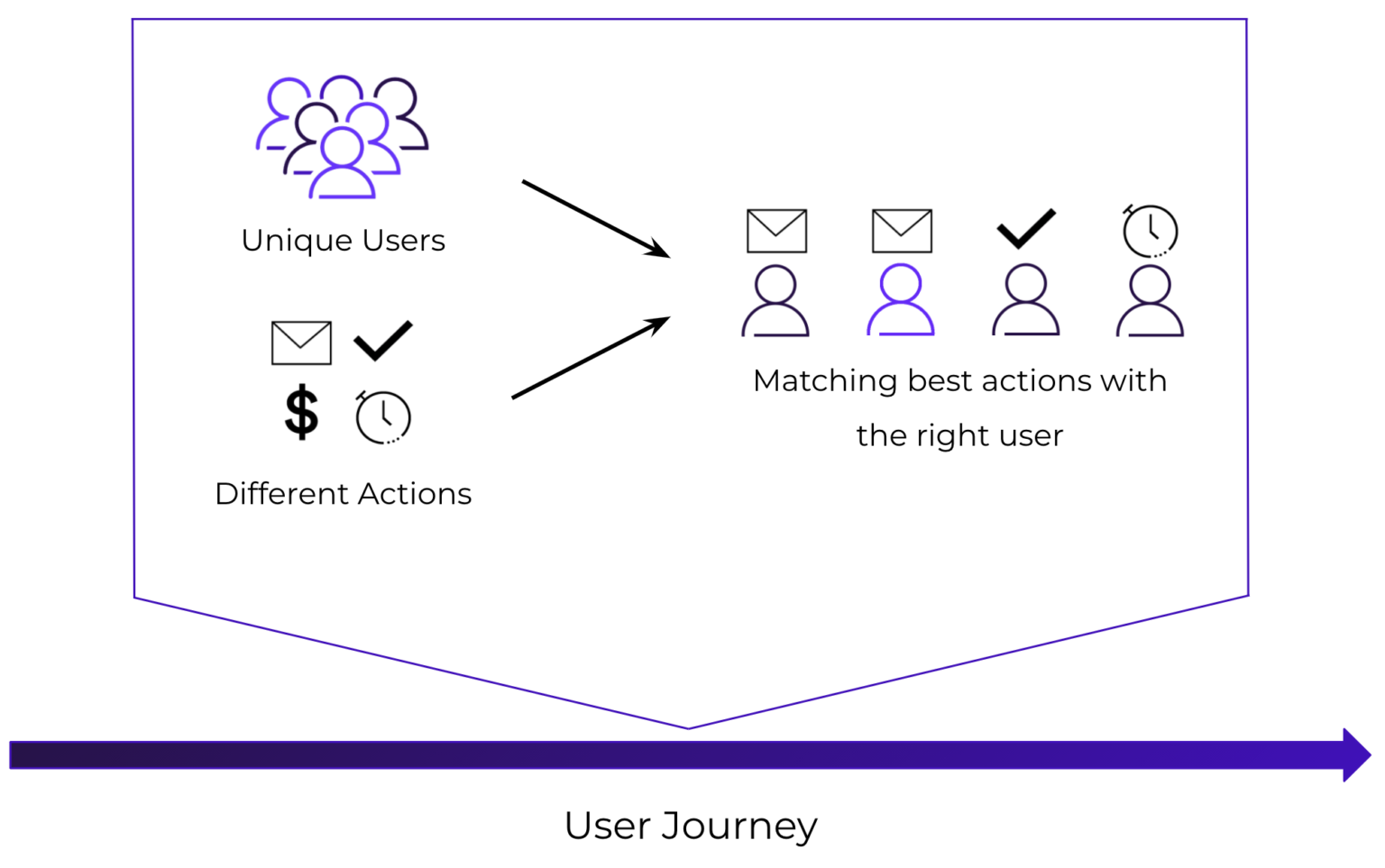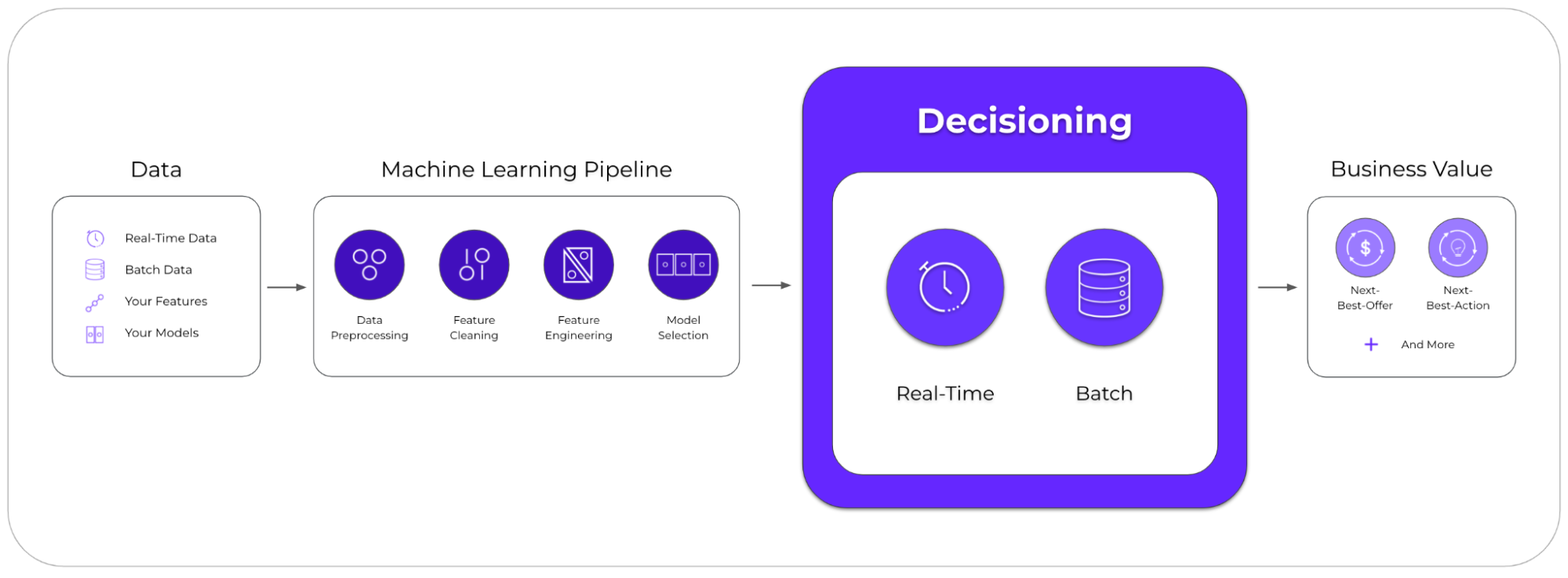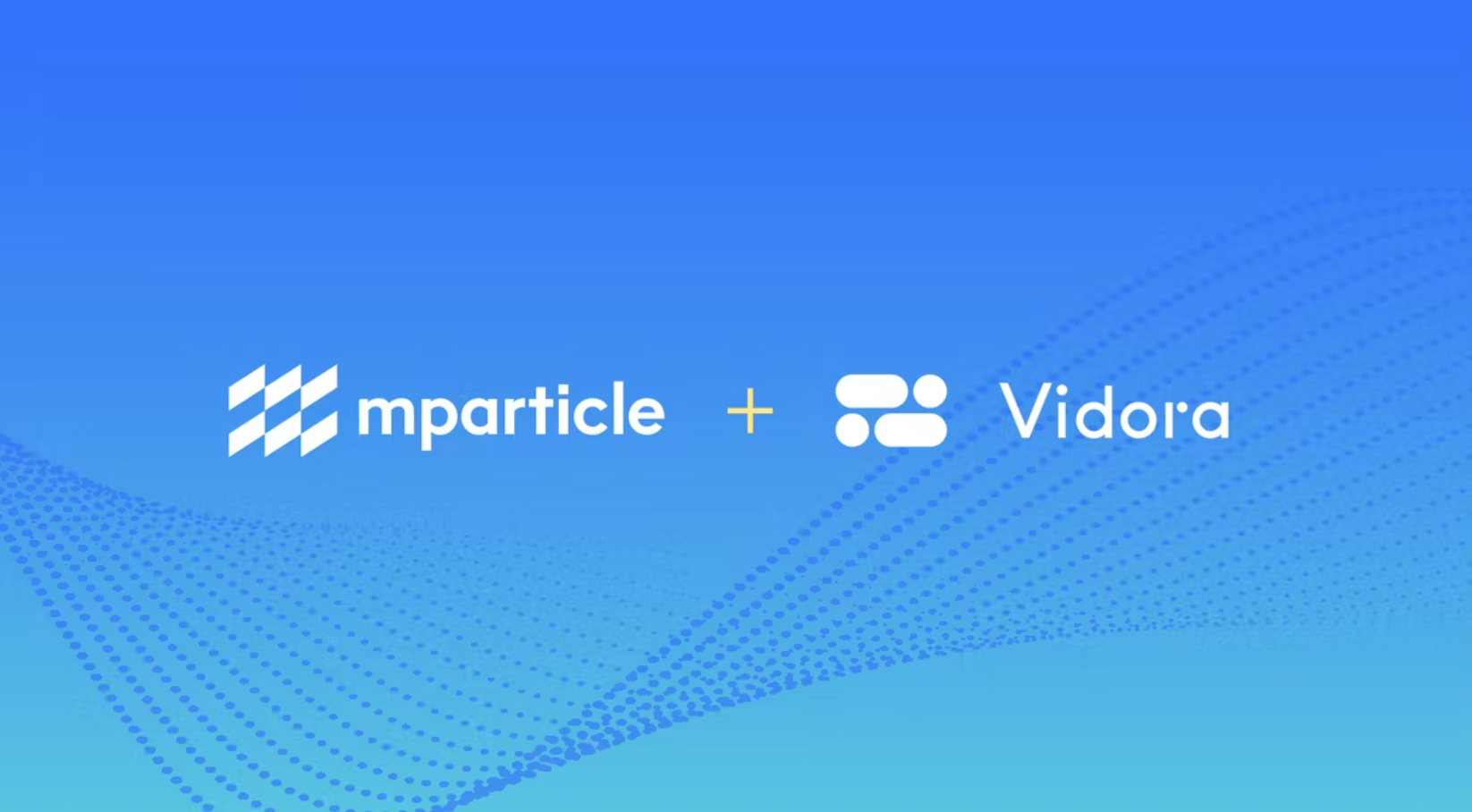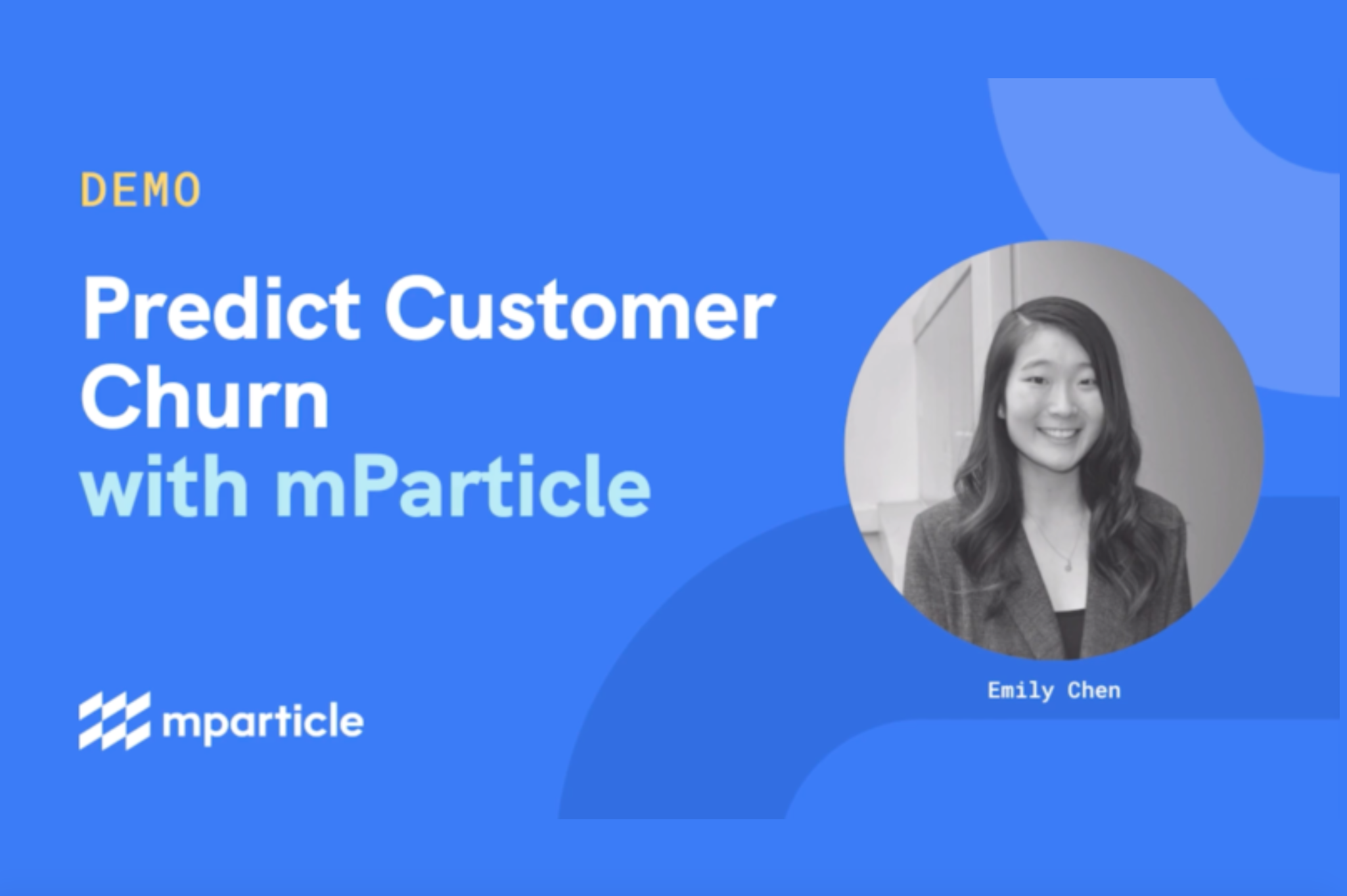
Techniques like next-best-action, next-best-offer, and dynamic decisioning can dramatically elevate customer experiences – increasing customer loyalty and driving increased conversions. This post focuses on how next-best-action can yield increases in conversions, brand loyalty, and ROI by creating a more personalized user journey.
What is Next-Best-Action?
Next-best-action (NBA) is a type of dynamic decisioning strategy that encourages an optimal “action” for every user given their past behaviors. These optimal actions are learned based on past data from across the entire customer base and continually updated to reflect changing market conditions using machine learning algorithms. As an example, learn how one of Vidora’s partners saw a 400%+ increase in revenue by leveraging Cortex for next-best-action campaigns.
Next-best-action use cases arise across most digital experiences and across most verticals. The ROI of implementing NBA will be proportional to the value of having individual users engage in specific actions on the digital experience. The highest value for NBA is often achieved on sites focused on increasing conversions, increasing purchases, or increasing sign-ups/registrations.

A visual representation of next-best-action: personalize a user’s journey by choosing the right action for each user at the right time.
Next-Best-Action : A Use Case in Retail
Let’s consider an online retailer. A customer visits a retail website. The customer then proceeds to browse through products, read product reviews, and finally adds items into their cart. The customer then is distracted and leaves their items in the cart, not finalizing the purchase. Next-best-action decisioning can leverage all those past and current customer behaviors to drive an optimal business action for a user.
What are possible business actions at this point? Here are a few examples of actions that could be taken with the hypothetical retail customer described above –
- Send an abandoned cart email
- Send a push notification indicating a product to purchase
- Customer representative call
- Send a targeted offer or discount
- Show a personalized discount banner on site
- Send an SMS
- Engage a Chatbot
- Encourage to sign up for newsletter
- Do nothing
The challenge is picking the right decision for each unique user, based on an almost infinite number of paths and actions those users have taken in the past. This is where next-best-action technology can really shine.
Implementing Real-Time Machine Learning for Next-Best-Action
Next let’s focus on the types of data needed for NBA. Many NBA techniques rely only on historical data given the difficulty of processing real-time consumer behaviors in a machine learning framework.
However, real-time user information is critical for a successful NBA experience. Vidora is investing heavily in real-time machine learning for next-best-action in particular. The Vidora Decisioning SDK was designed to accelerate the deployment of NBA experiences for customers. The SDK is able to ingest both real-time data and batch historical data, combine those sources, and ultimately make the best decision for every user. Here is a good overview of how Cortex combines both real-time and historical information to make the best decision for every user.
A decisioning pipeline configured for real-time inference will generate new decisions for every user based on their real-time behaviors. These decisions can be used for dynamic next-best-action targeting across user channels. Additionally, real-time inference allows for decisions to be made on first time or anonymous users.

By utilizing both real-time and batch data, teams are able to optimize for next-best action, next-best-offer, and other dynamic decisioning experiences.
Next-Best-Action and your Business
Next-best-action is a powerful paradigm for increasing customer lifetime value and we believe an essential component for most digital businesses. One of our goals with Cortex is to decrease the time-to-market for businesses interested in deploying the technology through both interfaces within Cortex and client-side technologies like our SDKs.
If you would like to learn more, please reach out and contact us at info@vidora.com!


